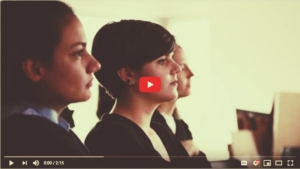LabLitArch News: Two Illuminating Workshops
 From the LabLitArch News page
From the LabLitArch News page
The first workshop was held in April, in collaboration with professor Marco Maggi of USI University of Lugano (CH), Institute of Italian Studies, and organized by the City of Lugano.
An array of participants, including USI literary students, graduate design students, and two selfless local architects (Flora and Michela), attended. Professor Maggi’s area of research, which focuses on the “mental space” of the reader, allowed for a more in-depth exploration of how a literary text “carves out” a space from within the mind of the reader.
While working with one of professor Maggi’s students who has been visually impaired since birth, we realized how her ability to deduce an architectural space (obviously only its interior since its exterior shape isn’t perceivable to her) is incredibly similar to how a reader perceives the “structure” of a literary text, where words function not so much as “building blocks”, but more as excavating toolsthat actively create space by subtracting material from a solid mass (imagine, for example, the city of Petra in Jordan). A story, in fact, is obviously un-knowable from the “outside” and it’s only once we’ve begun to penetrate it (by reading it) that we start to slowly create a perception about its “construction”.
For this edition we worked on texts by Hemingway, Delius, Tabucchi and A.M. Homes. Here is a short video on our 20+ hours of practically continuous work: 
The second workshop was LabLitArch’s very first experiment with music. It was in fact called “Laboratory of Musical Architecture”. It was held in May, in collaboration with professor Andrea Malvano of the University of Turin’s Department of Humanities. Professor Malvano, who has degrees in both literature and music (piano), selected pieces by Bach, Schumann, Schoenberg and Glass. The participants, all trained musicians or music students, worked with two experienced LabLitArch architects (Michelle Vecchia and Alessio Lamarca) to produce five amazing models:
We applied the very same methodology and approach used in many Literary Architecture workshops, i.e. working mostly backwards in search of possible motivating and implicit original inclinations that were at the basis of the creation of the musical pieces. As with literary texts, we avoided manifesting what is somewhat already explicit in the music. By working in the opposite direction, so to speak, we tried to get as close as possible, if it is even ever attainable, to the composer’s original creative sparkor insight or intuition.
 This led us to the realization that, in music as in literature, movement in this direction forces us to leave our familiar disciplinary turf and we end up reaching a kind of expansive narrative ground probably common to most human artistic endeavors. Perhaps there indeed exists a sudden creative impulse, which is neither made of words nor of notes — it’s just there, as a not-yet-manifest expression of a narrative intuition. If so, narrative is truly all-pervasive. And architecture, with its fundamental narrative elements such as volume, space, light, weight, revelations, suspension, etc. seems to be an ideal tool to analyze, explore and even enter this boundless space of narrative.
This led us to the realization that, in music as in literature, movement in this direction forces us to leave our familiar disciplinary turf and we end up reaching a kind of expansive narrative ground probably common to most human artistic endeavors. Perhaps there indeed exists a sudden creative impulse, which is neither made of words nor of notes — it’s just there, as a not-yet-manifest expression of a narrative intuition. If so, narrative is truly all-pervasive. And architecture, with its fundamental narrative elements such as volume, space, light, weight, revelations, suspension, etc. seems to be an ideal tool to analyze, explore and even enter this boundless space of narrative.
Insight from both of these workshops will hopefully be included in the Literary Architecture book I am working on with Il Saggiatore. Work is progressing well and, as an additional sneak preview, I would like to share this new sketch of the book’s structure, here. At first glance, it may not seem so different from the previous sketch; but to me, and my very-limited writing experience, it represents a huge step forward!
Check the original post from the LabLitArch website:
http://lablitarch.com/2019/06/lablitarch-news-two-illuminating-workshops/


